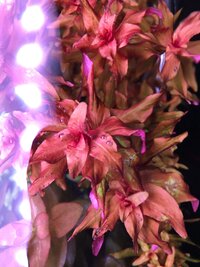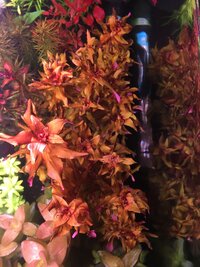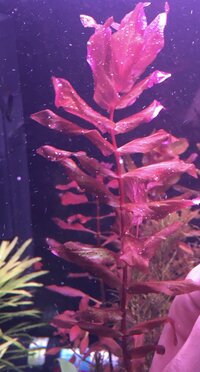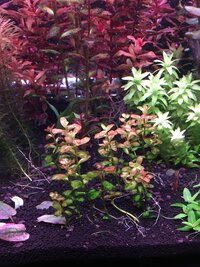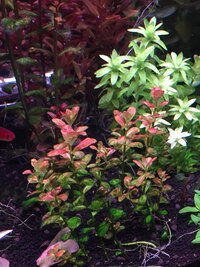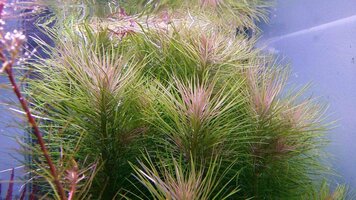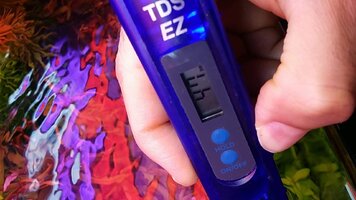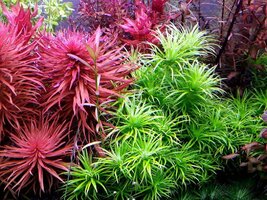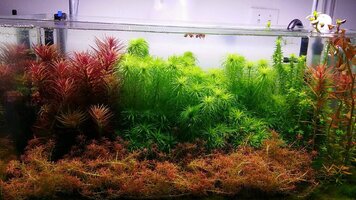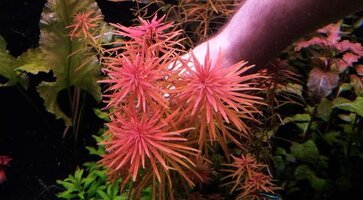-
You are viewing the forum as a Guest, please login (you can use your Facebook, Twitter, Google or Microsoft account to login) or register using this link: Log in or Sign Up
You are using an out of date browser. It may not display this or other websites correctly.
You should upgrade or use an alternative browser.
You should upgrade or use an alternative browser.
Lean dosing pros and cons
- Thread starter Riverside Scaper
- Start date
plantnoobdude
Member
Absolutely stunning mate, i assume with such low tds you are using marschner numbers?Here are some old pictures that I found of my tank. TDS 47
Marschner or any of the lean approach I used, the TDS was always kept in the lower range.Absolutely stunning mate, i assume with such low tds you are using marschner numbers?
@plantnoobdude here is the picture from the tank with the same Micro/Fe recipe you are currently using. 0.1 Fe weekly Max.
Pantanal refused to grow emersed in this tank during that time and it looked weired. It's a completely different story though. Once I got a new batch this issue was resolved.
Pantanal refused to grow emersed in this tank during that time and it looked weired. It's a completely different story though. Once I got a new batch this issue was resolved.
Attachments
plantnoobdude
Member
care to explain why the pantanal is growing thicker leaves hear underwater? i've seen a few threads no this with no conclusive answer as to what causes it.Pantanal refused to grow emersed in this tank during that time and it looked weired. It's a completely different story though. Once I got a new batch this issue was resolved.
interested in hearing more!It's a completely different story though.
I do not know the true cause behind why it was doing that, but it would grow normal leaves at first and then eventually become like that, sometime it looked like it was growing emerged leaves under water. if you trimmed it under water, it would still form emerged leaves. for whatever reason it refused to accept to grow submerged growth to grow normal leaves. I played with this plant for several months trying to figure this out but couldn't come up with any real conclusion. it must have something to do with mutation.care to explain why the pantanal is growing thicker leaves hear underwater? i've seen a few threads no this with no conclusive answer as to what causes it.
interested in hearing more!
Here is the picture of it under similar dosing:
Attachments
Couple more shots under various conditions, from stunting, pinched stems, neglect and normal plant growth.
Attachments
-
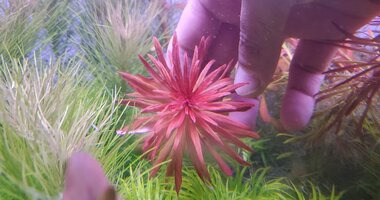 received_312679916551988.jpeg152.5 KB · Views: 131
received_312679916551988.jpeg152.5 KB · Views: 131 -
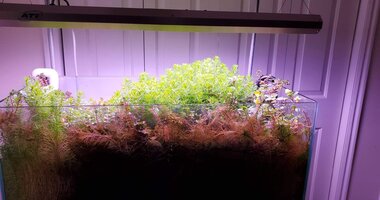 received_867977477111512.jpeg187.6 KB · Views: 114
received_867977477111512.jpeg187.6 KB · Views: 114 -
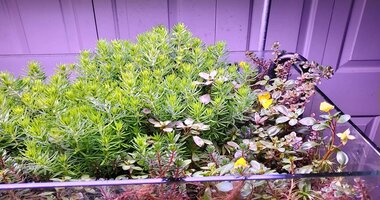 received_2936945769868614.jpeg310.2 KB · Views: 118
received_2936945769868614.jpeg310.2 KB · Views: 118 -
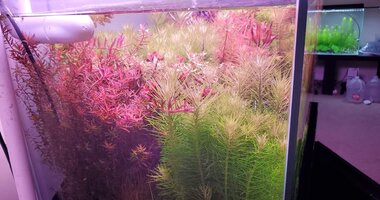 received_398683574549214.jpeg238.1 KB · Views: 112
received_398683574549214.jpeg238.1 KB · Views: 112 -
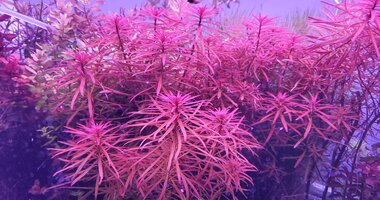 received_299654664502401.jpeg268.2 KB · Views: 122
received_299654664502401.jpeg268.2 KB · Views: 122 -
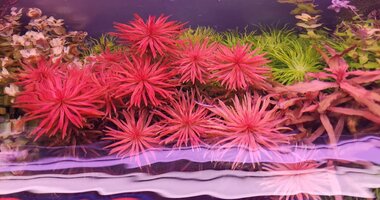 received_3347330122024179.jpeg202.8 KB · Views: 123
received_3347330122024179.jpeg202.8 KB · Views: 123 -
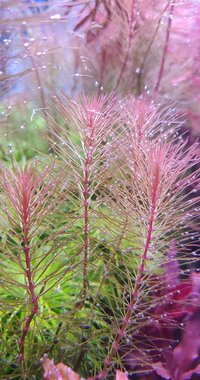 received_3136951733051868.jpeg236 KB · Views: 130
received_3136951733051868.jpeg236 KB · Views: 130 -
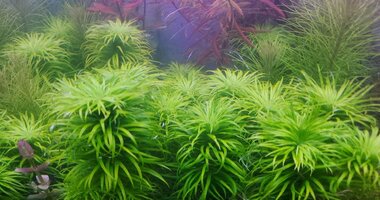 received_265285374773256.jpeg208.8 KB · Views: 117
received_265285374773256.jpeg208.8 KB · Views: 117 -
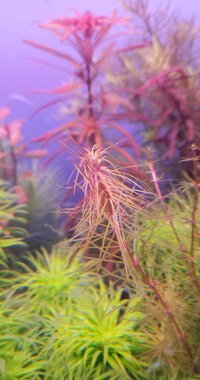 received_761107271330437.jpeg118.7 KB · Views: 117
received_761107271330437.jpeg118.7 KB · Views: 117
plantnoobdude
Member
t
the pantanal in the 4th pic looks fantastic!Couple more shots under various conditions, from stunting, pinched stems, neglect and normal plant growth.
Hi all,
That looks pretty conclusive. I would expect the Tonina to green up as well, but the yellow leaves remaining yellow and the new growth green. Green new growth will take a while to appear because of Tonina's <"slow growth"> rate.
I can see the healthy new leaves on the Cuphea can't tell from the second photo whether the terminal yellow leaves (in the first photo) are any greener? Assuming that it was an iron availability issue they should still be pale?
That one reason I like Amazon Frogbit (Limnobium laevigatum) for the <"Duckweed Index">, it <"is green">. Lesser Duckweed (Lemna minor) would combine <"being green"> with a <"very quick growth rate"> (both advantageous) but it doesn't do well in soft water or in <"low nutrient situations">.
cheers Darrel
That looks pretty conclusive. I would expect the Tonina to green up as well, but the yellow leaves remaining yellow and the new growth green. Green new growth will take a while to appear because of Tonina's <"slow growth"> rate.
I can see the healthy new leaves on the Cuphea can't tell from the second photo whether the terminal yellow leaves (in the first photo) are any greener? Assuming that it was an iron availability issue they should still be pale?
That one reason I like Amazon Frogbit (Limnobium laevigatum) for the <"Duckweed Index">, it <"is green">. Lesser Duckweed (Lemna minor) would combine <"being green"> with a <"very quick growth rate"> (both advantageous) but it doesn't do well in soft water or in <"low nutrient situations">.
cheers Darrel
@dw1305
Amazon Frogbit actually does quite well in soft water and lean dosing, I was tossing it out constantly, if the NH4 is provided in the water, it actually multiply very fast. most of the floating plant actually does better when there is a presence of NH4 in the water, these plant obtain green and strong colors. I have seen these plant take yellow color when NO3 is the main source of N in the water. they only obtained better color when the NO3 became lower. these floating plant might be good indicator for some nutrients but not all, they frequently obtained yellow growth which appear to look like that they are suffering from N deficiency even in presence of 50 ppm NO3.John q
Member
Yep frogbit and vallisneria can grow well in soft water.Amazon Frogbit actually does quite well in soft water and lean dosing.
if you are looking for a full potential for any plant in general, high light is highly recommended. spectrum rich in Blue and Reds will bring out the colors you are looking for.NIce photos from both Plantnoobnude and Happi. I would like to help my Macrandra look nicer - apart from lean dosing, does it require a lot of night to look 'nice'?
I am not seeing Darrel saying Frogbit doesnt do well in soft water and/or lean conditions, but rather Duckweed.
..Lesser Duckweed (Lemna minor) would combine <"being green"> with a <"very quick growth rate"> (both advantageous) but it doesn't do well in soft water or in <"low nutrient situations">.
Duckweed also does well under soft water, if its given the above condition. floater plant like Phyllanthus Fluitans does very well in soft water as well. I must have misunderstood "Frogbit doesn't do well in softwater" but all these floating plant have no issue growing under above condition.I am not seeing Darrel saying Frogbit doesnt do well in soft water and/or lean conditions, but rather Duckweed.
Hi all,
It had to be a floating, or emergent, plant to access the 400 ppm of CO2 (Diana Walstad's <"aerial advantage">) and not all tanks could have an emergent plant, so it had to be a floating plant and all the <"other options had some issues">.
It would have been better if I had called it the <"Frogbit Index"> but I had already written about when I was still using Lemna minor as <"my canary">.
I'm not a plant physiologist, but I can't see any reason why there should be a difference in leaf colour (chlorophyll density) between plants supplied with fixed nitrogen as NO3-, rather than NH4, with the proviso that their are kinetic advantages to ammonia uptake.
If you've found the leaves remain pale green, I'd guess that it is either that:
do well in soft water and/or lean conditions, but rather Duckweed.
It does, that is why I use it for the Duckweed Index, in preference to the original duckweed, Lesser Duckweed (Lemna minor), which was always slightly yellow in soft water even when nitrogen levels were higher.Amazon Frogbit actually does quite well in soft water and lean dosing,
It had to be a floating, or emergent, plant to access the 400 ppm of CO2 (Diana Walstad's <"aerial advantage">) and not all tanks could have an emergent plant, so it had to be a floating plant and all the <"other options had some issues">.
It would have been better if I had called it the <"Frogbit Index"> but I had already written about when I was still using Lemna minor as <"my canary">.
Interesting, that was the issue with Lemna minor, but I definitely haven't found that in terms of the leaf colour for Limnobium laevigatum. I have regarded leaf growth and level of greeness as <"a very good proxy for fixed nitrogen level"> and often that nitrogen would have been supplied as nitrate (NO3-). I've been using fertilisers with urea in them for some time now, so I don't have any recent experience of "nitrate only" nitrogen supply. You definitely get very quick greening with ammonia (NH3) and urea (CO(NH2)2) based fertilisers.I have seen these plant take yellow color when NO3 is the main source of N in the water. they only obtained better color when the NO3 became lower. these floating plant might be good indicator for some nutrients but not all, they frequently obtained yellow growth which appear to look like that they are suffering from N deficiency even in presence of 50 ppm NO3.
I'm not a plant physiologist, but I can't see any reason why there should be a difference in leaf colour (chlorophyll density) between plants supplied with fixed nitrogen as NO3-, rather than NH4, with the proviso that their are kinetic advantages to ammonia uptake.
If you've found the leaves remain pale green, I'd guess that it is either that:
- Nitrogen (N) wasn't Liebig's limiting nutrient, it was one out of potassium (K), phosphrous (P), magnesium (Mg) or iron (Fe), or
- there were some issues with nitrate (NO3-) measurement?
Last edited:
@dw1305 or it could be that when NO3 is the main source of N, it might be wise to add bit more Mo to increase the Nitrogen uptake by those plants, where they have easy uptake of NH4 without the need for Mo.
also what if these floating plant are actually using most of the NH4 soon as its formed in the aquarium naturally? so weather you add 5,10,30,50 ppm NO3, they still try to go for available NH4 first before they start using the NO3? this is how the Nitrogen cycle works in our aquarium and I strongly believe that these plants are great ammonia/ammonium remover.
the paleness remain under the presence of all the nutrient at higher level. not all of them were pale, it was some leaves which looked normal and some leaves were still showing yellow color, soon as I added some NH4 the entire surface maintained green color. so there is something somewhere which could be related to struggle to use NO3 as the only source.

Below is the attached file in case anyone is interested to read about it.
also what if these floating plant are actually using most of the NH4 soon as its formed in the aquarium naturally? so weather you add 5,10,30,50 ppm NO3, they still try to go for available NH4 first before they start using the NO3? this is how the Nitrogen cycle works in our aquarium and I strongly believe that these plants are great ammonia/ammonium remover.
the paleness remain under the presence of all the nutrient at higher level. not all of them were pale, it was some leaves which looked normal and some leaves were still showing yellow color, soon as I added some NH4 the entire surface maintained green color. so there is something somewhere which could be related to struggle to use NO3 as the only source.
Below is the attached file in case anyone is interested to read about it.
Attachments
Last edited:
John q
Member
Nor am I. What I do see is people repeatedly suggesting vallisneria won't do well in low kh/gh parameters.. This is a myth. It will grow fine in 1kh 2gh water. Can't comment on the dosing regime as of yet, still early days so currently sat on the fence 😄I am not seeing Darrel saying Frogbit doesnt do well in soft water and/or lean conditions,


